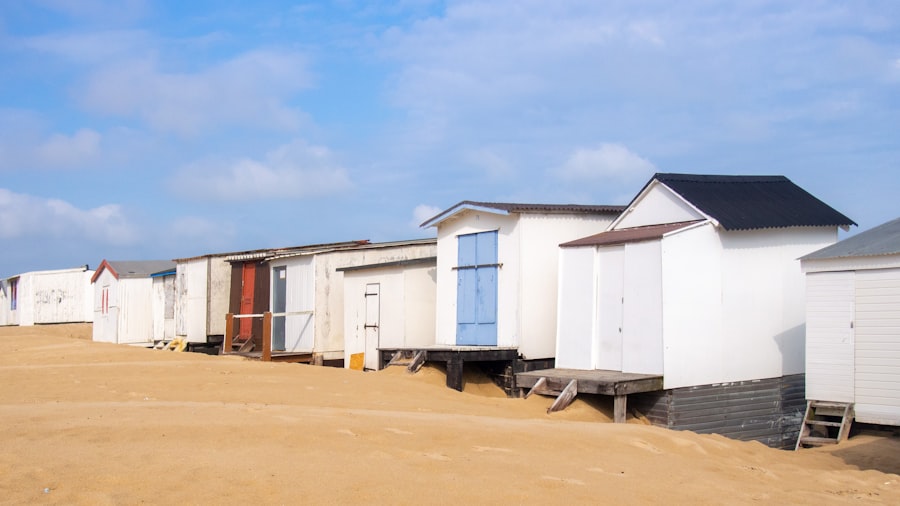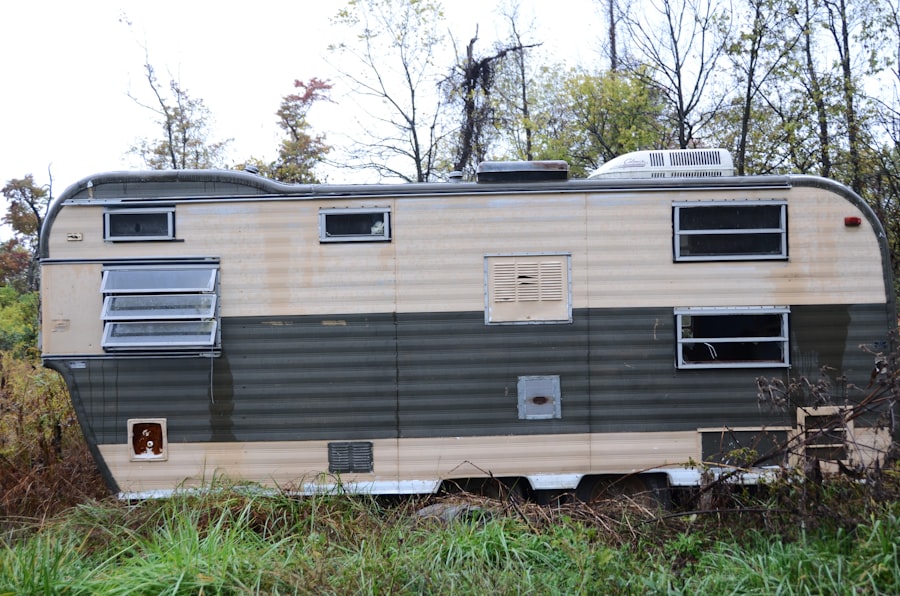Affordability is a primary consideration for many individuals and families when it comes to housing options. In recent years, the rising costs of traditional homes have made it increasingly difficult for first-time buyers to enter the market. This has led to a growing interest in alternative housing solutions, such as tiny homes and manufactured homes, which often come with a significantly lower price tag.
For instance, while the median price of a single-family home in the United States can exceed $300,000, many tiny homes can be purchased for as little as $50,000 to $100,000. This stark contrast in pricing allows buyers to allocate their financial resources more effectively, potentially freeing up funds for other essential expenses or investments. Moreover, the affordability of alternative housing options extends beyond the initial purchase price.
Many of these homes are designed to be more cost-effective in terms of maintenance and utility expenses. For example, smaller living spaces typically require less energy to heat and cool, leading to lower monthly utility bills. Additionally, the reduced square footage often translates to lower property taxes and insurance costs.
This cumulative effect of affordability not only makes homeownership more accessible but also promotes financial stability for individuals and families who may otherwise struggle to keep up with the financial demands of traditional housing.
Key Takeaways
- Affordability: Tiny homes offer a more affordable housing option compared to traditional homes, making them accessible to a wider range of people.
- Spaciousness: Despite their small size, tiny homes are designed to maximize space and provide a comfortable living environment.
- Customization: Tiny homes can be customized to fit the specific needs and preferences of the homeowner, allowing for a personalized living space.
- Mobility: Tiny homes are often built on wheels, allowing for easy mobility and the flexibility to move to different locations.
- Community: Tiny home communities offer a sense of belonging and shared values, creating a strong sense of community among residents.
- Modern Amenities: Despite their small size, tiny homes can be equipped with modern amenities such as energy-efficient appliances and smart home technology.
- Energy Efficiency: Tiny homes are designed to be energy-efficient, with a smaller environmental footprint compared to traditional homes.
- Investment Opportunity: Tiny homes can be a smart investment, offering the potential for rental income or a more affordable housing option for buyers.
Spaciousness
While the term “tiny home” might evoke images of cramped quarters, many alternative housing options are surprisingly spacious when designed thoughtfully. The key lies in maximizing every square foot through innovative design techniques and multifunctional furniture. For instance, many tiny homes incorporate lofted sleeping areas that free up floor space for living and dining areas.
This vertical use of space allows residents to enjoy a sense of openness while still having all the necessary amenities within reach. Furthermore, clever storage solutions, such as built-in cabinets and under-bed storage, help minimize clutter and create an organized living environment. In addition to clever design, the concept of spaciousness can also be extended to the surrounding environment.
Many alternative housing communities are situated in picturesque locations that offer ample outdoor space for residents to enjoy. This connection to nature can enhance the feeling of spaciousness, as residents can step outside their homes and immerse themselves in expansive landscapes or community gardens. The integration of outdoor living spaces, such as decks or patios, further blurs the lines between indoor and outdoor living, allowing residents to experience a greater sense of freedom and connection to their surroundings.
Customization

Customization is a significant advantage of alternative housing options that appeals to many prospective homeowners. Unlike traditional homes, which often come with predetermined layouts and finishes, tiny homes and manufactured homes can be tailored to meet individual preferences and needs. This flexibility allows homeowners to create spaces that reflect their personal style and lifestyle requirements.
For example, a family with young children may prioritize open play areas and child-friendly features, while a couple may opt for a minimalist design with sleek finishes and smart technology integration. The customization process can extend beyond aesthetic choices; it can also encompass functional elements that enhance daily living. Homeowners can choose energy-efficient appliances, eco-friendly materials, and smart home technology that aligns with their values and lifestyle.
This level of personalization not only makes the home more enjoyable but also fosters a deeper connection between the homeowner and their living space. As a result, individuals are more likely to invest time and effort into maintaining and improving their homes when they feel a sense of ownership over the design and functionality.
Mobility
| Category | Metrics |
|---|---|
| Urban Mobility | Vehicle traffic, public transportation usage |
| Transportation Efficiency | Travel time, congestion levels |
| Environmental Impact | Carbon emissions, air quality |
Mobility is a defining characteristic of many alternative housing options, particularly tiny homes on wheels. This unique feature allows homeowners to relocate their residences with relative ease, providing them with unparalleled flexibility in their living arrangements. For instance, individuals who work remotely or enjoy traveling can take their homes with them, exploring new locations without sacrificing the comforts of home.
This lifestyle appeals to those who value experiences over material possessions and seek to embrace a more adventurous way of living. The mobility aspect also fosters a sense of community among like-minded individuals who choose this lifestyle. Many tiny home owners congregate in specialized communities or attend events that celebrate alternative living.
These gatherings provide opportunities for networking, sharing ideas, and forming friendships based on shared values and experiences. The ability to move one’s home while still being part of a supportive community creates a unique social dynamic that enhances the overall living experience.
Community
Community plays a vital role in the appeal of alternative housing options. Many individuals who choose tiny homes or manufactured homes do so not only for financial reasons but also for the sense of belonging that these communities offer. Unlike traditional neighborhoods where residents may feel isolated from one another, alternative housing communities often prioritize social interaction and collaboration among residents.
Shared spaces such as community gardens, fire pits, or recreational areas encourage neighbors to connect and engage with one another. Additionally, these communities often attract individuals who share similar values regarding sustainability, minimalism, and intentional living. This common ground fosters deeper relationships among residents, creating an environment where people support one another in their personal journeys toward simpler lifestyles.
The sense of camaraderie that develops within these communities can lead to lasting friendships and a network of support that enhances overall well-being.
Modern Amenities

Despite their smaller size, many alternative housing options are equipped with modern amenities that rival those found in traditional homes. Homeowners can enjoy contemporary kitchens with energy-efficient appliances, stylish bathrooms with modern fixtures, and open-concept living areas that promote social interaction. The integration of smart home technology further elevates the living experience by allowing residents to control lighting, heating, and security systems from their smartphones or tablets.
Moreover, the focus on modern amenities extends beyond individual units; many alternative housing communities offer shared facilities that enhance residents’ quality of life. These may include fitness centers, coworking spaces, or communal kitchens where neighbors can gather for potluck dinners or cooking classes. The availability of such amenities not only adds convenience but also encourages socialization among residents, fostering a vibrant community atmosphere.
Energy Efficiency
Energy efficiency is a hallmark of many alternative housing options, making them an attractive choice for environmentally conscious individuals. Smaller living spaces inherently require less energy for heating and cooling compared to larger homes, resulting in lower utility bills and a reduced carbon footprint. Additionally, many tiny homes are constructed using sustainable materials and incorporate energy-efficient features such as solar panels, high-quality insulation, and energy-efficient windows.
The emphasis on energy efficiency aligns with a growing awareness of environmental issues and the desire for sustainable living practices. Homeowners can take pride in knowing that their choice of housing contributes positively to the planet while also providing long-term financial benefits through reduced energy costs. Furthermore, as energy prices continue to rise, investing in an energy-efficient home becomes increasingly appealing from both an economic and ecological standpoint.
Investment Opportunity
Investing in alternative housing options presents unique opportunities for individuals looking to diversify their portfolios or enter the real estate market without significant financial risk. The affordability of tiny homes and manufactured homes makes them accessible entry points for first-time investors or those seeking vacation rental properties. With the rise in popularity of short-term rental platforms like Airbnb, homeowners can generate income by renting out their properties when not in use.
Moreover, as societal trends shift toward minimalism and sustainable living, the demand for alternative housing solutions is expected to grow. This trend creates potential for appreciation in property values over time as more people seek out affordable and eco-friendly living options. Investors who recognize this shift early on may find themselves well-positioned to capitalize on emerging market opportunities while contributing positively to community development and environmental sustainability.
In conclusion, alternative housing options offer numerous advantages that cater to diverse lifestyles and preferences. From affordability and spaciousness to customization and mobility, these homes provide innovative solutions for modern living challenges while fostering strong community connections and promoting sustainable practices. As interest in these alternatives continues to rise, they represent not only a viable housing solution but also an investment opportunity that aligns with contemporary values.

